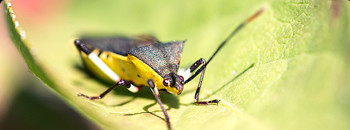Long History and High Rates
Lyme disease doesn’t just occur at high rates in Connecticut – the disease was named after the Connecticut community of Lyme. Now, more than three decades since the cluster of disease sufferers in Lyme inspired the name, the disease continues affecting our state significantly. Connecticut experiences more Lyme disease cases relative to state population as any state in the country[i] with the Center for Disease Control and Prevention confirming nearly 2,000 cases in 2010, alone.[ii] The Connecticut Department of Public Health says the continue prevalence of Lyme disease is due partly to “increased tick abundance” and “increased potential for contact with ticks.”[iii]
People suffering from Lyme disease can experience facial or Bell’s palsy, severe headaches and neck stiffness, pain and swelling in large joints and heart palpitations and dizziness. However, Lyme disease is difficult to diagnose as its symptoms can be attributed to other health problems. Left untreated, approximately 60 percent of Lyme disease sufferers experience arthritis, while 5 percent develop chronic neurological challenges months or years after the infection.[iv]
More (Hungry) Ticks = More Lyme
Lyme disease is a concern for Connecticut any year, but 2012 may prove to be a banner season for ticks. Experts have identified various factors that may increase Lyme disease risk this spring and summer. Recent news reports outline several ecological events leading to the predicted increase in Lyme disease:
- Foxnews.com reported on March 23 that ecologists are blaming a bumper acorn crop followed by a poor crop, which led to a white-footed mouse population surge and subsequent decline, for an increase in hungry ticks looking for a mammal on which to latch. [v]
- The New York Times noted on March 18 that entomologists say the mild winter is leading to increased tick activity earlier than normal and increased the opportunity for people and ticks to come into contact.[vi]
- Richard Ostfeld, a disease ecologist for the Cary Institute of Ecosystem Studies, says the warm weather and the lack of white-footed mice for hungry ticks to feed on, creates a perfect storm for an uptick in Lyme disease: hungry ticks, fewer food sources, and more active months to be on the prowl for a meal.[vii]
Important Tick-Fighting Tools
Controlling the tick population helps reduce the likelihood that unsuspecting athletes, campers, hikers, or anyone enjoying the outdoors will encounter hungry ticks. Thoughtful and careful use of pesticide products is an effective step in the process to protect Connecticut from more prevalent Lyme disease problems. The Connecticut Agricultural Experiment Station says pesticides that target ticks (acaricides) are the “most effective way to reduce ticks, particularly when combined with landscaping changes to decrease habitat.”[viii] One application of insecticide targeted at tick habitat (not broad spraying) provides 85 to 90 percent control of tick populations.[ix]
[i]Lyme Disease. Connecticut Department of Public Health. http://www.ct.gov/dph/cwp/view.asp?a=3136&q=395590., Accessed 23 March 2012.
[ii] Reported Lyme Disease Cases by State. Centers for Disease Control and Prevention. http://www.ct.gov/dph/cwp/view.asp?a=3136&q=395590. Accessed 23 March 2012.
[iii] Lyme Disease. Connecticut Department of Public Health. http://www.ct.gov/dph/cwp/view.asp?a=3136&q=395590. Accessed 23 March 2012.
[iv] “Signs and Symptoms of Lyme Disease.” Centers for Disease Control and Prevention. http://www.cdc.gov/lyme/signs_symptoms/index.html. Accessed 23 March 2012.
[v] “Strange events will lead to increase of Lyme disease this year.” Foxnews.com. http://www.foxnews.com/health/2012/03/22/strange-events-will-lead-to-increase-lyme-disease/. Accessed 23 March 2012.
[vi] “The Downside of a Balmy Winter? Long Walks with the Dog Aren’ts Carefree.” Nytimes.com. http://www.nytimes.com/2012/03/19/us/a-mild-winter-means-a-longer-tick-season.html. Accessed 23 March 2012.
[vii] “Nature, the trickster.” Albany Times Union. http://www.timesunion.com/local/article/Nature-the-trickster-3419367.php. 20 March 2012. Accessed 23 March 2012.
[viii] “Area-Wide Chemical Control of Ticks.” Tick Management Handbook. The Connecticut Agricultural Experiment Station. http://healthvermont.gov/prevent/lyme/documents/handbook6.pdf. 2007. Accessed 23 March 2012.
[ix] Ibid.

